As we navigate this new age of infectious diseases and their impact on global industries, it is paramount to examine the trials the US dairy farming sector is facing amidst the latest bird flu outbreak. What are the challenges at hand? What plot twists can we anticipate in this unfolding narrative? The answers, much like the situation itself, are intricate and multifaceted.
At the core of the conundrum, we have bird flu outbreak and the various restrictions it imposes, such as permits and quarantines. Eventuating from a necessity to stem the spread of the virus, these legislative measures have, however, cast a distinct shadow on the thriving vein of US dairy farming.
“Farmers, more than ever, need to consider the implications of their activities on the wider environment and community. An outbreak, such as this one with bird flu, is not just a solitary event. It is, indeed, a stark spotlight illuminating the intertwined threads of commerce, health, and environmental integrity.”
The subsequent sections of this article will dissect these aspects meticulously – the situation’s unique predicament, its ramifications, and the critical questions that stem from it – providing insightful analysis and provocations for our collective industry introspection.
Understanding Bird Flu and Its Impact on the Dairy Industry
Given the recent development of the bird flu outbreak, we, at the heart of the dairy industry, face a terrain of unprecedented challenges and complexities. In a shocking turn of events, the bird flu has breached the barrier between avian species and dairy cattle in the United States, marking the first occurrence of such a cross-species shift. But why does this matter, one might ask. Cattle – an integral part of our dairy production – transmitting this highly pathogenic avian influenza (HPAI) threatens both the productivity and the safety of our dairy products.
As detailed by the U.S. Department of Agriculture (USDA) Animal and Plant Health Inspection Service (APHIS), the first positive test of HPAI was detected in a dairy herd in Idaho. The spread has since extended to six states, with every affected cow possibly tracing back to a single farm. These alarming reports compel us to reassess our understanding of the disease’s spread, suggesting that the virus may not be transmitted directly from cow-to-cow, but instead could be spreading via dairy workers or milking equipment, potentially carried through droplets on clothes, gloves or suction cups used for milking.
How exactly does this influence our industry operation and output? The gravest consequence is the degradation of product quality and safety. The unfortunate reality is that milk from infected animals must be diverted or even destroyed. Consumers, industry workers, regulators – we are all left grappling with the question, how can we guarantee the safety of our milk during such outbreaks? In response, The Food and Drug Administration (FDA) has published a series of questions and answers targeted at these concerns. Their advisories assert that manufacturing or selling raw unpasteurized milk products made from cows exhibiting symptoms of illness or exposed to avian influenza is an unacceptable risk.
The impact of the bird flu outbreak is not constrained to cows alone. The virus has been detected in goats in Minnesota, reminding us of the potential widespread impact across diverse sectors of the livestock industry. As this crisis unfolds, will we rise to the occasion, challenged to innovate and adapt our practices to this new landscape? In an industry often criticized for its conventional practices, perhaps this situation offers a necessary, albeit distressing, catalyst for meaningful change.
Importance of Immediate Action: Notification and Permits
In dealing with such an unprecedented crisis caused by the bird flu outbreak, it is incumbent upon us as a community of dairy farmers to comprehend the fundamental importance of immediate action, particularly concerning notification and permits. Even as federal agencies collaborate with state and industry partners to manage and diminish the threats posed by cattle illnesses, there is no doubt that the first line of defense is the dairy producers themselves.
Indeed, the expedient reporting of cattle diseases cannot be overstated in its worth. This vital action enables the faster containment and control of any potential outbreak, and safeguards not only the afflicted farm but neighbouring dairy establishments as well. Simultaneously, ethical considerations necessitate that dairy farmers uphold enhanced biosecurity measures, a testament to our shared responsibility in preventing the further dissemination of these dangerous ailments.
In this unparalleled scenario, the parameters of our permits are also evolving. One might ask, then, how does this entail a greater commitment? Consider this: permits now require that any milk entering interstate commerce for consumption must first undergo pasteurization. While this might appear laborious, the long-term benefits to the safety and quality of dairy — indeed, our backbone — are undeniable. Texas Agriculture Commissioner Sid Miller’s pledge to exhaust every resource to preserve quality and safety in Texas agriculture reinforces the importance of these developments.
In truth, the fallout from inaction could be astronomical, with affected milk from diseased animals being diverted or destroyed. As the Centers for Disease Control and Prevention and the U.S. Department of Agriculture have confirmed, even polar bears and marine animals are suffering the consequences of this outbreak. The Food and Drug Administration’s call to consumers to be aware of the risks associated with raw milk consumption in light of the high pathogenic avian influenza detections should serve as a clarion call to us all.
In the final analysis, what is demanded of us, dairy farmers and those in the industry, is a tenacity and resilience, a commitment to safeguard our livestock, our consumers, and indeed our livelihoods for generations to come.
First Steps: Reporting a Suspected Bird Flu Outbreak
In the face of the recent bird flu outbreak, communication is critical to curb its spreading. Dairy farmers are being urged to promptly report any illness in their cattle to local authorities. Although the instances of bird flu transmission to humans remain a rarity, the spread of the bird flu to dairy cattle, as confirmed by the USDA, necessitates proactive measures from all industry stakeholders. This is the first time in U.S. history that the dairy cattle are impacted, reaching to six states, according to research.
The situation raises legitimate concerns, but it’s also important to underline that preliminary testing by the National Veterinary Services Laboratories has found no significant changes in the bird flu virus that could enhance its transmission to humans. Accordingly, the risk posed to the public remains low, but remains a matter requiring situational awareness and timely actions.
The uncharted spread points to the possible transmission from a single farm source, exacerbating the need for accurate and swift disease reporting. This is a reminder of the interconnectedness of our industry – how a single event can ripple across the country, affecting numerous farms and threatening the very backbone of our dairy production. So, what should be the first steps when a suspected bird flu outbreak occurs on a farm?
To prevent further spread via potential vectors such as milking equipment or the personnel involved in milking, it’s imperative that the affected dairy farmers report the situation promptly. This should involve immediate collaboration with specialized veterinarians and the local agricultural department. Closely adhering to enhanced biosecurity measures is also essential to prevent the spread of the virus to other cattle in the vicinity.
Such efforts underscored by the U.S. Department of Agriculture (USDA) Animal and Plant Health Inspection Service (APHIS) are currently mobilizing resources following the detection of the highly pathogenic avian influenza (HPAI) within a dairy herd in Idaho, along with presumptive positive results in New Mexico, Michigan, and Texas.
Could these emerging challeges lead us to re-evaluate our existing practices and policies? More importantly, could it push the industry towards implementing innovative solutions to tackle future threats? These are the questions that demand a collective industry-wide response, and the responsibility must not fall upon the shoulders of individual dairy farmers alone. After all, our collective success hinges on our willingness to face these challenges head-on and work together to ensure the health and sustainability of the U.S. dairy industry.
Quarantine Protocols: What Dairy Farmers Need to Know
With the recent detection of the highly pathogenic avian influenza (HPAI) in a dairy herd in Idaho, the U.S. Department of Agriculture (USDA) Animal and Plant Health Inspection Service (APHIS), farmers broadly distributed across the U.S. dairy landscape are compelled to re-evaluate their response plans for infectious diseases. But what are the key elements that dairy farmers should know and implement in the face of a looming bird flu outbreak?
The heart of the response resides in stringent quarantine protocols. Practicing robust enhanced biosecurity measures is not just good practice— it is crucial in curtailing the spread of the virus. Farmers are urged to work closely with veterinarians and report cattle illnesses promptly, thereby enabling effective monitoring and timely response to potential HPAI threats.
Maintaining the integrity of the milk supply is a paramount concern for dairy farm operators. The U.S. Food and Drug Administration (FDA) encourages consultation with state regulatory officials and vets for direction on thwarting HPAI transmission in raw milk. Furthermore, the FDA advises against manufacturing or selling raw unpasteurized milk products made with milk from cows showing signs of illness or exposed to avian influenza. So why is this important?
Let us pause to consider the health risks intertwined with using raw milk from infected cows. Despite the deceptive veil of normalcy that cows infected with HPAI may display — indeed, they may show no overt signs of illness — the risk of contamination remains potent. This means that dairy producers are required to send only milk from healthy animals into processing for human consumption, for the safety and health of the greater populace.
Moreover, the FDA strongly encourages the pasteurization of milk from symptomatic cows before feeding it to calves or other animals, in order to curb the propagation of the virus within the herd itself. Walking down this path is not only prudent, it could potentially deflect a significant blow to a dairy operation and the larger dairy sector.
So, to our dairy farmer colleagues we pose the question: how robust are your current quarantine protocols really? Is it not time to step up and reassess these plans in the shadow of the Bird Flu outbreak? Let’s confront the task head-on and work towards a common goal of abundant, safe and disease-free dairy production.
Beyond Quarantine: Managing Dairy Operations Amid the Bird Flu Outbreak
The outbreak of the bird flu in dairy cattle in the United States, a first, signifies a new challenge for dairy farmers already reeling from several predicaments within the industry. It requires stringent measures not only to contain the spread of this highly pathogenic avian influenza (HPAI) but also to manage day-to-day operations amid these unprecedented circumstances. In six states, the USDA has confirmed the spread of the virus to cattle, possibly tracing back to one farm. Could this suggest a more widespread problem that we are yet to fully ascertain?
Arguably, the greatest challenge lies in breaking the cycle of disease transmission. Preliminary investigations point to milking equipment and individuals involved in milking as potential conduits for virus spread. Such revelation demands reevaluation of existing biosecurity measures. They call for strengthened sanitization protocols, particularly focusing on the cleaning and disinfecting of equipment and ensuring increased personal hygiene of the dairy workforce.
Meanwhile, the role of the U.S. Department of Agriculture (USDA) Animal and Plant Health Inspection Service (APHIS) cannot be stressed enough. Its rapid response in confirming the detection of HPAI in a dairy herd in Idaho, demonstrated vigilance. Yet, further support, in terms of resources and guidance, for affected farmers is paramount. Can the industry and government agencies together, establish a mechanism facilitating this necessary rapport?
Another critical consideration for dairy farmers is the impact on product manufacturing and sales. With the FDA advising against making or selling raw unpasteurized milk products from cows showing illness symptoms or exposed to avian influenza, disruptions to the supply chain are imminent. To mitigate these effects, the FDA proposes consultations with state regulatory officials and veterinarians. But can such consultations provide the necessary guidance to prevent HPAI transmission in raw milk? Most importantly, how will these regulations affect the precarious balance of supply and demand within the distressed dairy industry?
Reporting cattle illnesses in a timely manner is also essential. In these testing times, early detection and quick action can potentially prevent an outbreak from snowballing into an epidemic. Producers need to enhance their biosecurity measures to mitigate the challenge posed by HPAI. But is the industry prepared for quick and efficient reporting? What are the barriers that farmers face and how can we strive towards removing them?
These issues underscore the mounting complexity of managing dairy operations amid the bird flu outbreak. In the face of this new adversity, critical dialogue, innovative thinking, and ethical considerations must underpin the industry’s response. For it is not just about surviving this outbreak, but also using this experience to better prepare for future challenges. We, as a community, ought to rise to this challenge.
The Bottom Line
In conclusion, the alarm bells sounded by the bird flu outbreak present a complex challenge for the US dairy farming industry. Though various administrative bodies including the American Veterinary Medical Association, U.S. Department of Agriculture, and Centers for Disease Control and Prevention, affirm a minimal risk to human consumers, producers are urged to act diligently. Quick reporting and enhanced biosecurity measures are paramount. It is, therefore, intrinsic to understand that while the bird flu outbreak prompts a procedural shakeup – permitting changes, quarantine protocol implementation, and operational management – the potential for significantly disrupting the milk supply or prices seems limited at this juncture. We must remember that we are not passive observers to this situation, the actions we take now will shape the trajectory of the dairy industry’s future. Amplified cooperation and attention can ensure the maintenance of both the industry’s performance and the safety of the public – a balance we should strive for.





 Kathleen “Kaye” Miller, age 89, of Orangeville, Illinois, passed away peacefully at home surrounded by her loving family on Saturday, April 6, 2024. She was born Kathleen Bertha Miltimore in Sweetsburg, Quebec, Canada on January 23, 1935, to Walter and Evelyn (Wright) Miltimore.
Kathleen “Kaye” Miller, age 89, of Orangeville, Illinois, passed away peacefully at home surrounded by her loving family on Saturday, April 6, 2024. She was born Kathleen Bertha Miltimore in Sweetsburg, Quebec, Canada on January 23, 1935, to Walter and Evelyn (Wright) Miltimore. As you actively hunt for more farm-to-table products that offer natural ingredients, consider Philadelphia Cream Cheese. The Kraft Heinz is indeed ramping up its commitment to quality. By using their latest advertising campaign, the brand is making a worthwhile effort to promote its longstanding history and connection to real
As you actively hunt for more farm-to-table products that offer natural ingredients, consider Philadelphia Cream Cheese. The Kraft Heinz is indeed ramping up its commitment to quality. By using their latest advertising campaign, the brand is making a worthwhile effort to promote its longstanding history and connection to real 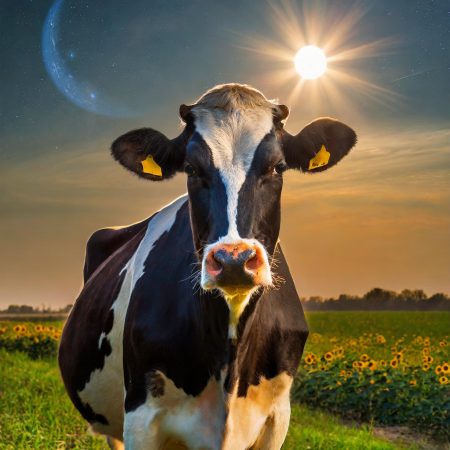 Ever contemplated a celestial event through the eyes of farm animals, specifically dairy cows? Yes, you’ve understood correctly, we’re diving into an unusual yet intriguing subject right here. Does a solar eclipse – a spectacular astronomical event where the moon passes between the Earth and the sun causing a shadow to cast over Earth’s surface – influence the behavior of our milk-producing friends? Intriguing, isn’t it?
Ever contemplated a celestial event through the eyes of farm animals, specifically dairy cows? Yes, you’ve understood correctly, we’re diving into an unusual yet intriguing subject right here. Does a solar eclipse – a spectacular astronomical event where the moon passes between the Earth and the sun causing a shadow to cast over Earth’s surface – influence the behavior of our milk-producing friends? Intriguing, isn’t it?  Wesley Winch from Fennimore, WI was chosen as this year’s recipient of a December Brown Swiss heifer calf from the 2017 WDE Brown Swiss Grand Champion Top Acres Supreme Wizard.
Wesley Winch from Fennimore, WI was chosen as this year’s recipient of a December Brown Swiss heifer calf from the 2017 WDE Brown Swiss Grand Champion Top Acres Supreme Wizard.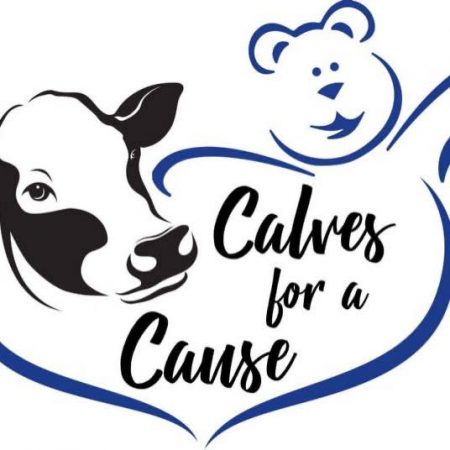 Exploring the challenging landscape of congenital diseases invariably leads us to remarkable stories of courage and resilience. One such narrative is the story of Brooks Markus, marking an intense battle with Congenital Central Hypoventilation Syndrome (CCHS), a rare and severe genetic disorder characterized by the failure of automatic control of breathing. His inspirational battle not only illuminates the struggles faced by those with CCHS but also shines a light on an innovative cause known as ‘Calves for a Cause’— an understated initiative championing the needs of individuals like Brooks.
Exploring the challenging landscape of congenital diseases invariably leads us to remarkable stories of courage and resilience. One such narrative is the story of Brooks Markus, marking an intense battle with Congenital Central Hypoventilation Syndrome (CCHS), a rare and severe genetic disorder characterized by the failure of automatic control of breathing. His inspirational battle not only illuminates the struggles faced by those with CCHS but also shines a light on an innovative cause known as ‘Calves for a Cause’— an understated initiative championing the needs of individuals like Brooks. 
 Discover why butter is the healthier choice over margarine. Uncover the truth about their nutritional values and how it impacts your health.
Discover why butter is the healthier choice over margarine. Uncover the truth about their nutritional values and how it impacts your health.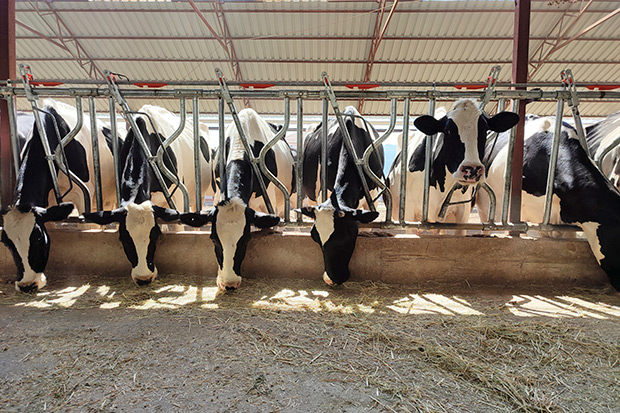
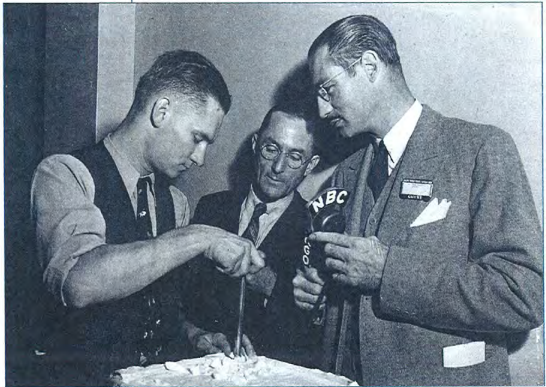

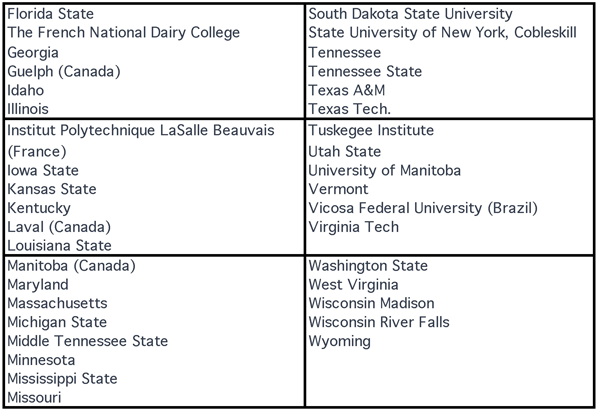
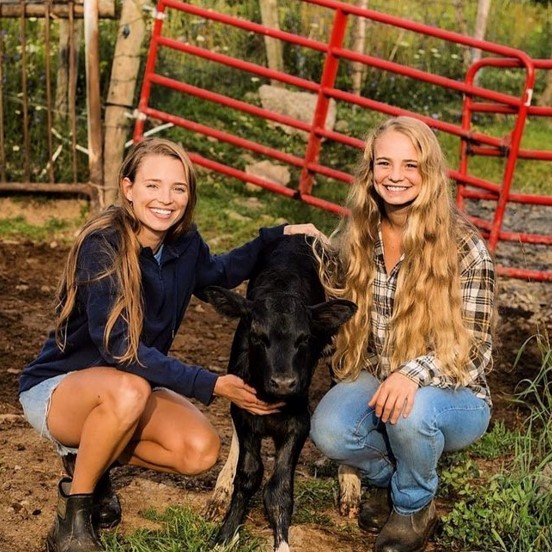 In the bustling world of dairy products, Hayley and Stephanie Painter have carved out a niche with their innovative yogurt company, blending tradition with modern culinary trends. Their journey from farm to spoon exemplifies the spirit of entrepreneurship, sustainability, and dedication to quality. Let’s delve into the story behind their successful venture.
In the bustling world of dairy products, Hayley and Stephanie Painter have carved out a niche with their innovative yogurt company, blending tradition with modern culinary trends. Their journey from farm to spoon exemplifies the spirit of entrepreneurship, sustainability, and dedication to quality. Let’s delve into the story behind their successful venture.




